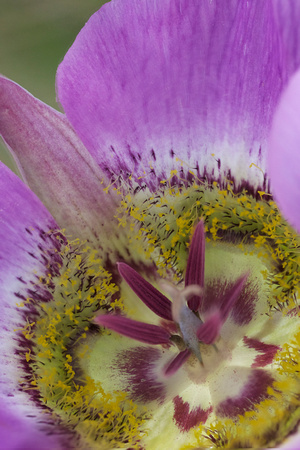Gunnison Mariposa Lily
Calochortus ( /ˌkælɵˈkɔrtəs/)[1] is a genus of plants that includes herbaceous, perennial and bulbous species. The genus includes aproximately 70 species distributed in North America from south west British Columbia to northern Guatemala and east to Nebraska and the Dakotas. Calochortus is the most widely dispersed genus of Liliaceae on the North American Pacific coast.[2] Of these, 28 species are endemic to California.[3] The genus Calochortus includes Mariposas (or Mariposa lilies) with open wedge-shaped petals, Globe lilies and Fairy lanterns with globe-shaped flowers, and Cat's ears and Star tulips with erect pointed petals. The word Calochortus is derived from Greek and means "beautiful grass".
Calochortus produce one or more flowers on a stem that arises from the bulb, generally in the spring or early summer. Unlike most other Liliaceae, Calochortus petals differ in size and color from their sepals.[2] Flowers can be white, yellow, pink, purple, bluish, or streaked. The insides of the petals are often highly hairy. These hairs, along with the nectaries, are often used in distinguishing species from each other.
Calochortus nuttallii, the Sego Lily, is the official state flower of Utah.


